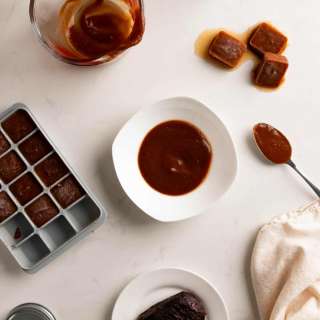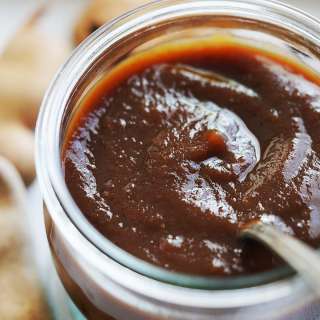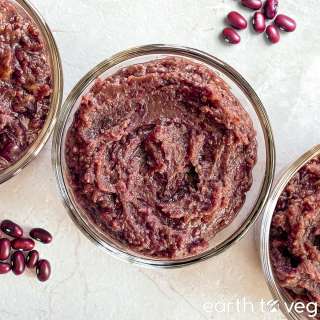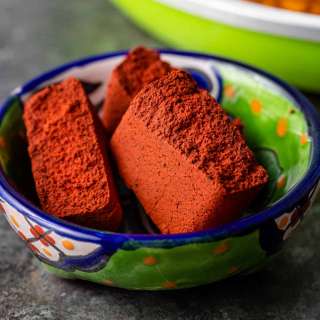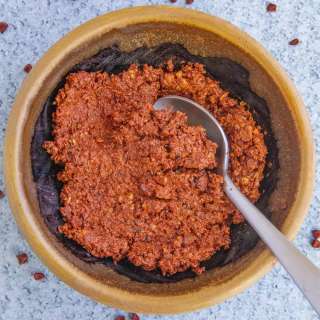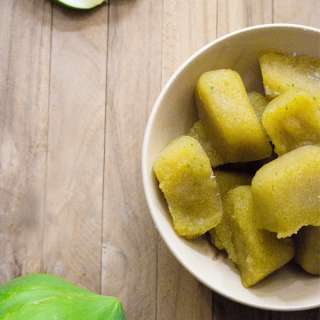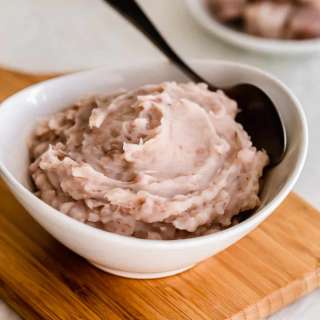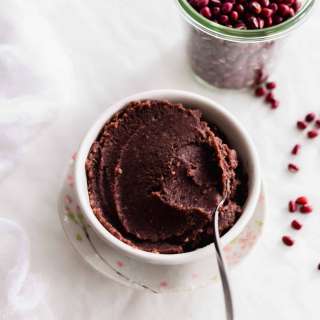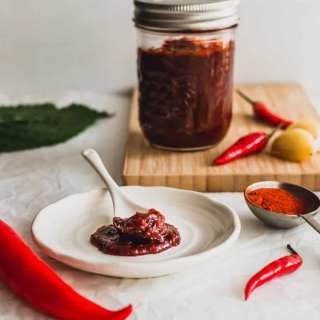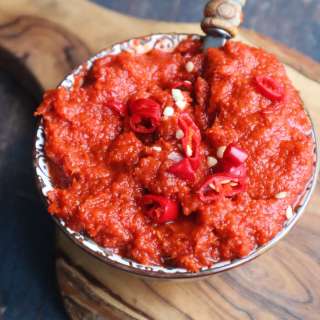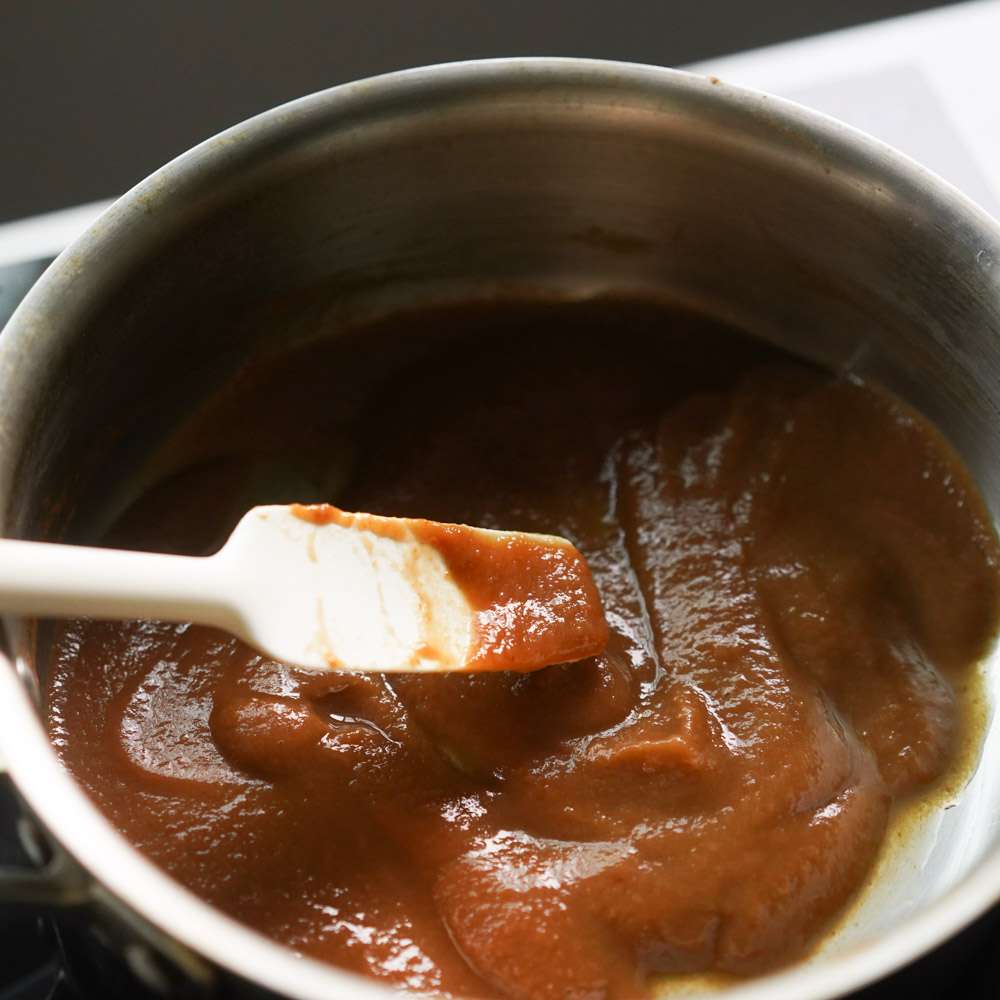
Tamarind Paste
User Reviews
5.0
6 reviews
Excellent
-
Prep Time
2 mins
-
Cook Time
2 mins
-
Total Time
37 mins
-
Servings
6 fl oz
-
Calories
478 kcal
-
Course
Condiments

Tamarind Paste
Report
This tamarind paste from scratch will give any recipe a slightly sweet and very tangy condensed flavor that packs a punch.
Share:
Ingredients
- 12 pods tamarind (4-6 seeds per pod)
- 8 fl oz boiling water
Instructions
- Rinse the tamarind pods under running water and peel the shells off along with any veins. You should be left with the soft pulp of the tamarind. Put the tamarind in a non-reactive bowl and repeat until all pods are peeled.
- Pour the hot filtered water into the bowl of tamarind, making sure all the tamarind is covered. The water should be around 200 °F. Let the tamarind sit in the hot water for about 30 minutes or until it’s cool to the touch.
- Use your hands to massage out the fibers and seeds of the tamarind. The water should begin to turn brown and thicken from the tamarind. You can stop once all the seeds have popped out of the flesh.
- Pour the tamarind water over a strainer into a bowl and push the excess pulp through the strainer. I like to use my fingers to push the liquid through and massage the fibers.
- Pour the tamarind liquid into a small saucepan over medium heat. Bring the liquid to a boil and bring down the heat to a simmer. Continue to simmer for 5 minutes or until the liquid has turned into a paste. You should be able to make a line down the middle of the pan with your spoon or spatula and the paste will stay put. Here's how the final texture should look.
- Transfer the paste into a heat-safe container and rest until it’s cool. Store in an airtight container in the fridge or use it immediately in a recipe.
Equipments used:
Notes
- Since tamarind is highly acidic, it’s best to use tools and pans that are non-reactive metals (stainless steel) or glass when working with and storing the fruit.
- Since tamarind is highly acidic, it’s best to use tools and pans that are non-reactive metals (stainless steel) or glass when working with and storing the fruit.
- Since tamarind is highly acidic, it’s best to use tools and pans that are non-reactive metals (stainless steel) or glass when working with and storing the fruit.
Nutrition Information
Show Details
Calories
4.78kcal
(0%)
Carbohydrates
1.25g
(0%)
Protein
0.06g
(0%)
Fat
0.01g
(0%)
Saturated Fat
0.01g
(0%)
Sodium
2.53mg
(0%)
Potassium
12.56mg
(0%)
Fiber
0.1g
(0%)
Sugar
1.15g
(2%)
Iron
0.06mg
(0%)
Nutrition Facts
Serving: 6fl oz
Amount Per Serving
Calories 478 kcal
% Daily Value*
| Calories | 4.78kcal | 0% |
| Carbohydrates | 1.25g | 0% |
| Protein | 0.06g | 0% |
| Fat | 0.01g | 0% |
| Saturated Fat | 0.01g | 0% |
| Sodium | 2.53mg | 0% |
| Potassium | 12.56mg | 0% |
| Fiber | 0.1g | 0% |
| Sugar | 1.15g | 2% |
| Iron | 0.06mg | 0% |
* Percent Daily Values are based on a 2,000 calorie diet.
Genuine Reviews
User Reviews
Overall Rating
5.0
6 reviews
Excellent
Other Recipes

